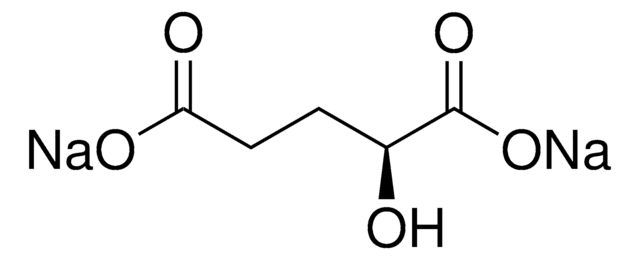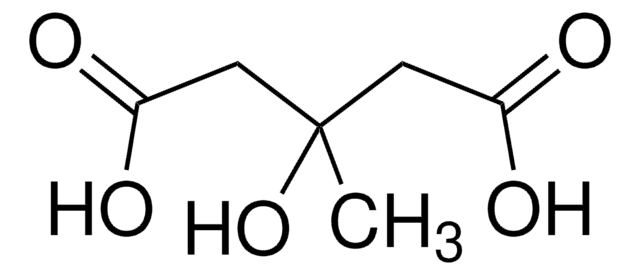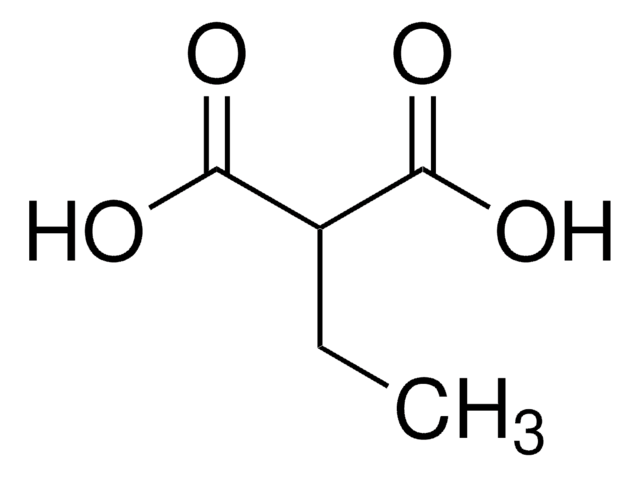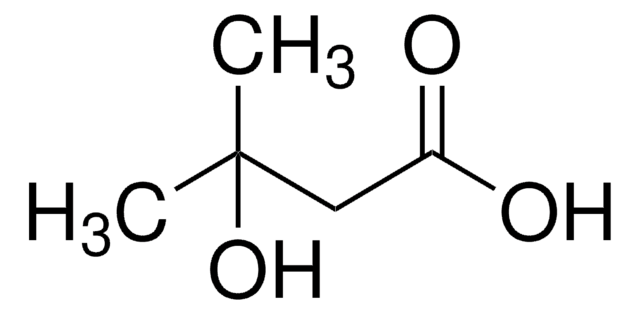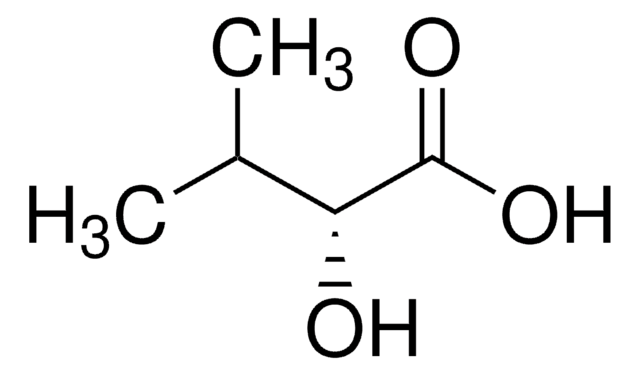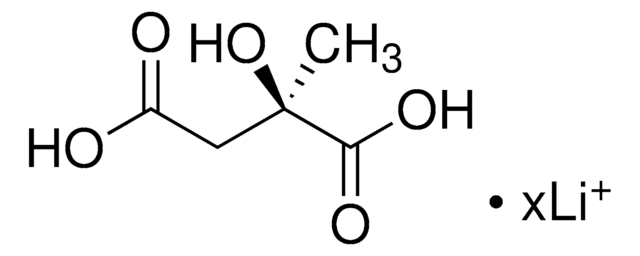H4392
3-Hydroxy-3-methylglutaric acid
≥95%
Synonym(s):
3-Hydroxy-3-methylpentanedioic acid
About This Item
Recommended Products
Quality Level
Assay
≥95%
mp
105-108 °C (lit.)
storage temp.
−20°C
SMILES string
CC(O)(CC(O)=O)CC(O)=O
InChI
1S/C6H10O5/c1-6(11,2-4(7)8)3-5(9)10/h11H,2-3H2,1H3,(H,7,8)(H,9,10)
InChI key
NPOAOTPXWNWTSH-UHFFFAOYSA-N
Looking for similar products? Visit Product Comparison Guide
Application
- Improvement of the functional value of green soybean (edamame) using germination and tempe fermentation: A comparative metabolomics study.: This research enhances the functional value of green soybean through germination and fermentation, identifying metabolites including those derived from 3-Hydroxy-3-methylglutaric acid. It offers insights into food processing and nutritional biochemistry (Iman et al., 2023).
Packaging
Storage Class Code
11 - Combustible Solids
WGK
WGK 3
Flash Point(F)
Not applicable
Flash Point(C)
Not applicable
Personal Protective Equipment
Regulatory Listings
Regulatory Listings are mainly provided for chemical products. Only limited information can be provided here for non-chemical products. No entry means none of the components are listed. It is the user’s obligation to ensure the safe and legal use of the product.
JAN Code
H4392-BULK:
H4392-100MG:
H4392-1G:
H4392-500MG:
H4392-5G:
H4392-VAR:
Choose from one of the most recent versions:
Already Own This Product?
Find documentation for the products that you have recently purchased in the Document Library.
Customers Also Viewed
Articles
Inborn errors of metabolism are caused by changes in specific enzymatic reactions and hundreds of different such alterations, which affect about 1 of every 5000 newborns, have been characterized.
Our team of scientists has experience in all areas of research including Life Science, Material Science, Chemical Synthesis, Chromatography, Analytical and many others.
Contact Technical Service

